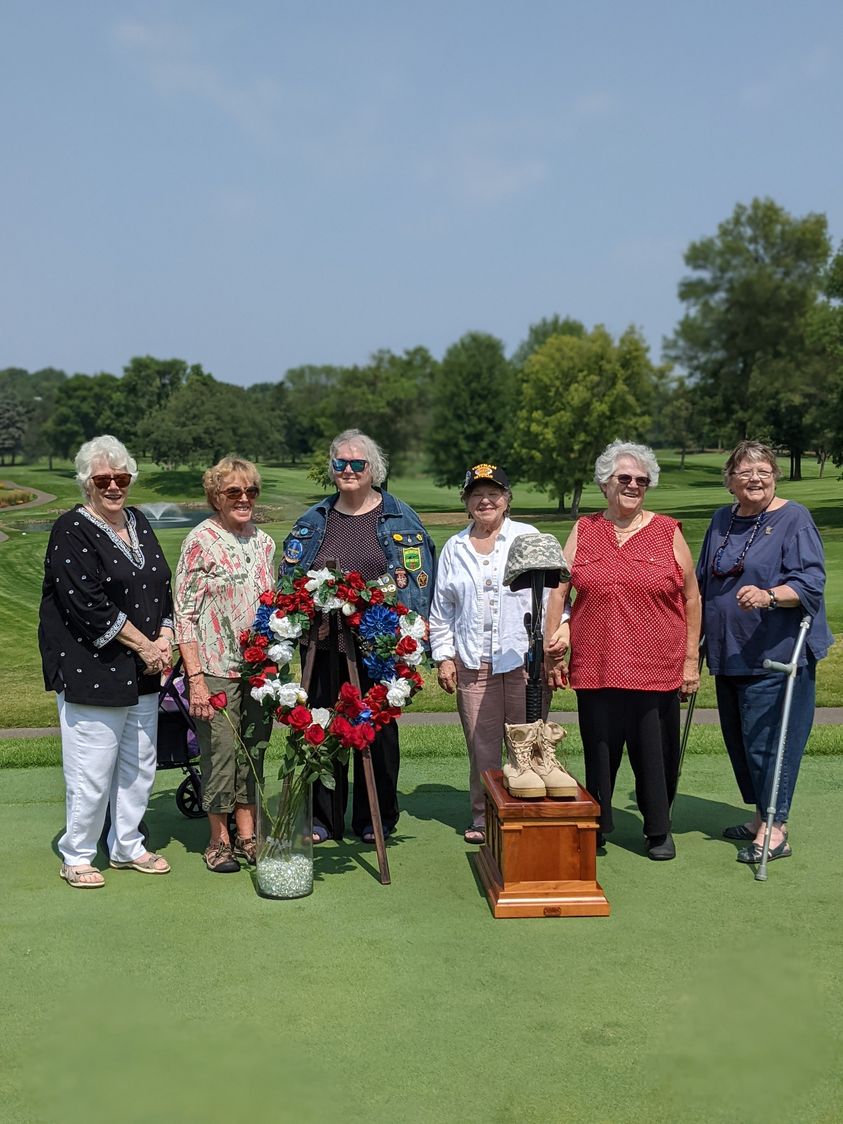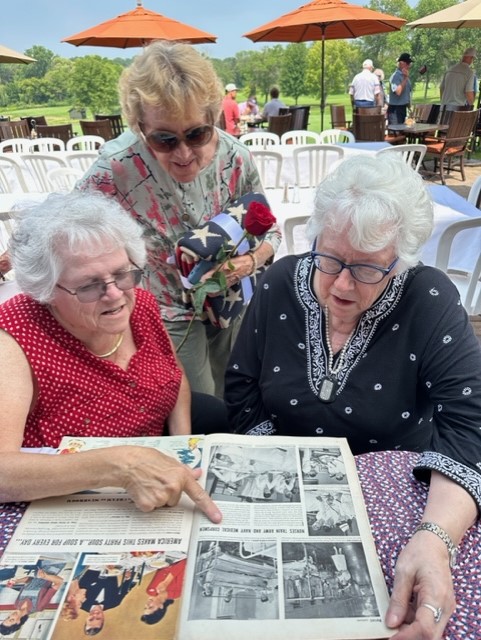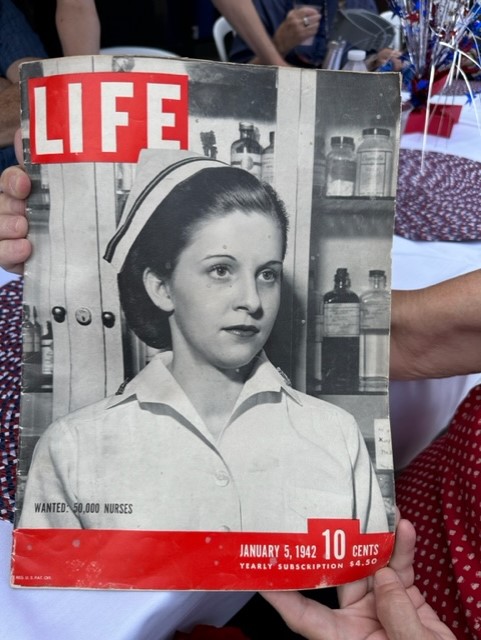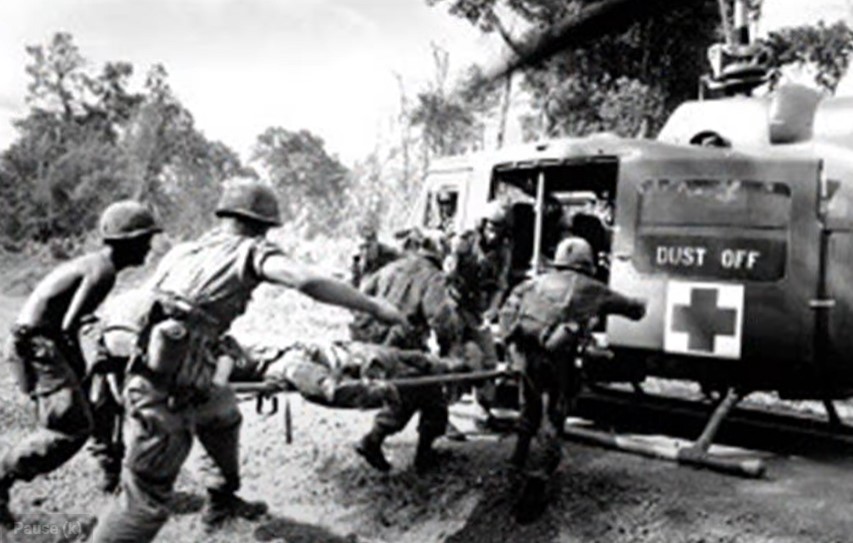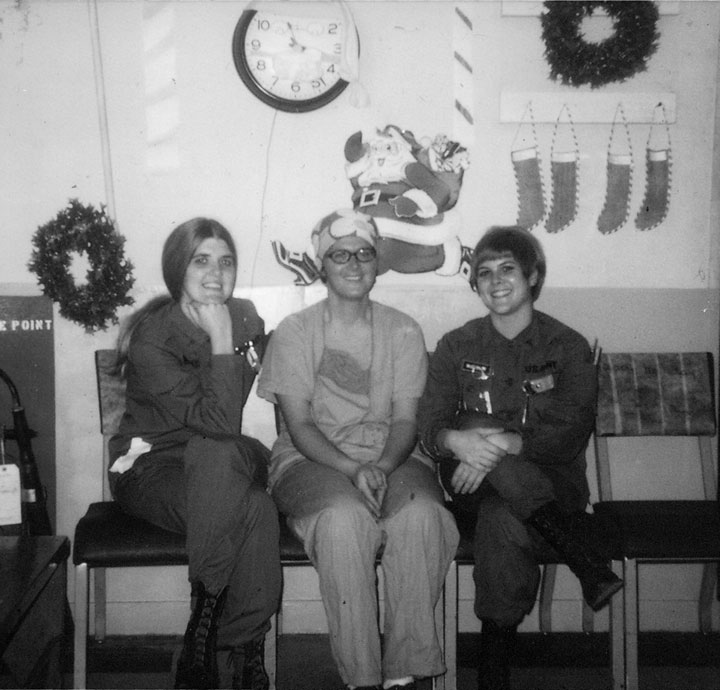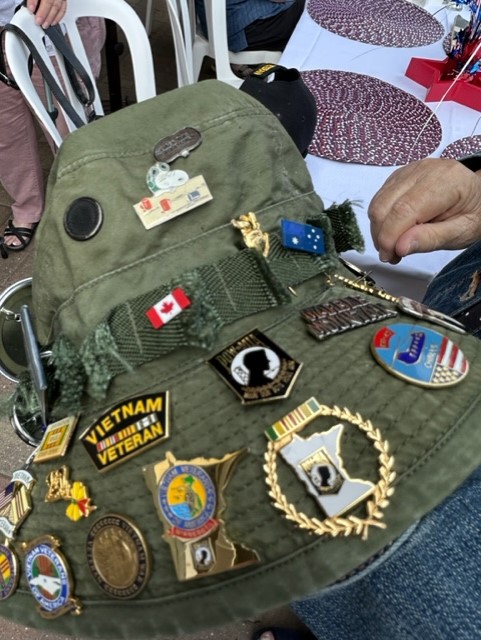They were called “Angels from Heaven.” They were typical all-American gals who were ready to take on the world in service to their country during the Vietnam War. They were not drafted. They volunteered. They were the nurses who served in the Vietnam War.
Tee It Up for the Troops paid tribute to a group of nurses who served during the Vietnam War at the 2023 Tee It Up for the Troops Event at Mendakota Country Club. In attendance, honored and pictured above left to right were: Mary Lu Ostergern- Brunner, Army Nurse Corps, 71st Evacuation Hospital, Pleiku, 1968-1969; Pam Barrows, Army Nurse Corps, 71st Evacuation Hospital, Pleiku, 1966-1967; Mary Breed, Army Nurse Corps, 95th Evacuation Hospital, Da Nang, 18th Surgical Hospital, Quang Tri, 1970-1971; Kay Bauer, Navy Nurse Corps, Vietnamese Provincial Hospital, Rach Gia, 1966-1967; Jeanne Mahaffey, Navy Nurse Corps, USS Sanctuary, Vietnam, 1971 – 1974
Lynn Bower, Army Nurse Corps, 24th Evacuation Hospital, Long Binh, Vietnam 1971.
Nurses Played a Vital Role in the Vietnam War
This group of nurses played a significant role in that war zone, providing high levels of care under extremely difficult conditions. They also returned home to the same unfriendly reception male veterans famously suffered, and often with the same psychological trauma. Nearly 10,000 women served in Vietnam during the war – 7,000 were nurses. Many were just barely out of nursing school when they were sent overseas.
The nurses who served in the Vietnam War are among the least recognized American military veterans. Many films and TV programs about U.S. involvement in Vietnam do not depict a single American nurse. We forget that thousands of women, like this group, also played a vital role in the Vietnam War.
Vietnam Nurses Honored
Members of the Vietnam nurses group honored initially met through a support group at the VA in Minnesota. Now they get together once a year for a potluck lunch and support.
Pam Barrows and Mary Lu Ostergern- Brunner were both in the 71st Evac Hospital at the same time in Pleiku, Vietnam, an area of heavy combat and casualties. Since Mary Lu was in the OR and Pam was in the ICU, they never met or connected while in Vietnam. Once back in Minnesota, they met through the Veteran Home where Mary Lu was a board member and Pam was an Administrator at the Veteran Home in Luverne, MN.
Pam Barrows-Army Nurse Corps
“My best friend from nursing school and I entered the service together and we were supposed to be assigned to the same unit after basic but we weren’t,” said Army nurse Pam Barrows. “We talked to those in charge and said “you promised” we would be assigned together and then they reassigned us both to Ft. Polk which had the reputation for being the armpit of the Army. Hearing that we said we might as well go to Vietnam but had no clue what we were asking for!”
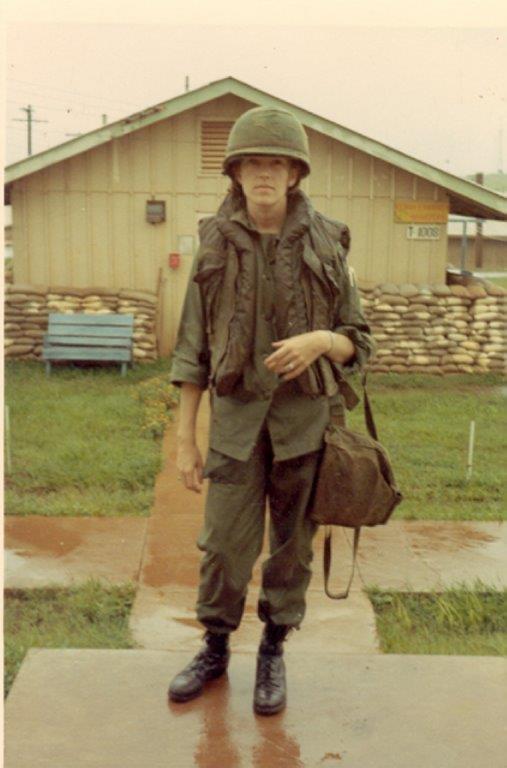
Nurses in Vietnam did whatever was asked of them. They often worked round the clock in massive casualty situations, directing triage, assisting with emergency tracheotomies and amputations, inserting tubes to assist surgeons, and removing damaged tissue and shrapnel from wounds. Pam said they were called “Pluckers” because they plucked out shrapnel from wounded soldiers.
“Our shifts were 12 hours, 6 days a week and our incoming came by helicopter, said Pam who worked in the Surgical ICU at the 71st Evacuation Hospital in Pleiku, Vietnam. “It would be called a ‘PUSH’ and the wounded were triaged in the ER. Often when working day shifts, we might have to crawl to safety if under a rocket attack.”
Pam said there was a high mental stress side of military nursing. “We never knew what was happening outside of our compound. We would hear groundfire close by when working nights and during blackouts. I worried about my fiancé who was a Company Commander of a Mechanized Infantry Unit with the 4th Division on the other side of Pleiku. I worried about rats coming into our ‘hootch’ or living quarters and rocket attacks.”
Mary Breed-Army Nurse Corps
“My brother was wounded in Vietnam and my friend from church, as well as my girlfriend’s brother, were both killed in Vietnam,” said Mary Breed. “That is why I volunteered as a nurse to serve in the Army. I graduated from nursing school at the Swedish Hospital in Minneapolis in 1969 and arrived in Bien Hoa, Vietnam, on September 5, 1970.” She worked as an OR nurse at the 95th Evac Hospital in DaNang and the 18th Surgical Hospital in Quang Tri.
“You can never prepare for war. You do not understand a war until you are there and in it,” Mary described. “I still cry when I think of Vietnam and certain instances. Everybody that goes to war goes through PTSD because war is just not normal.”
What was not normal was Mary’s 24th birthday in Vietnam. “I was cutting a birthday cake the cook had made when we heard a radio call that Hill 950, west of Quang Tri Provence, was getting run over with mortars,” Mary recalled. “Our hospital sent two “Dust Offs” or Medevac helicopters. The fighting was intense and they could only get in with one helicopter that only evacuated one of three Americans. One soldier was later deemed missing in action and the other a POW. Back at the hospital, we awaited the chopper to return, which was tenuous because the chopper was being shot at and had to make an emergency landing at Khe Sahn. It turned out to be a good birthday because our two crews made it home safe.”
Kay Bauer-Navy Nurse Corps
Kay Bauer grew up in St. Paul with thirteen brothers and sisters. Kay was a U.S. Navy Nurse for 35 years. She was one of two women in a forward surgical team of 7 people who worked in a provincial hospital in South Vietnam in 1966. “The hospital had no running water, no electricity and we had a generator in the operating room,” said Bauer in an interview. Even the walk to work from her quarters became dangerous. At one point she witnessed a U.S. helicopter getting shot down with bullets coming perilously close. “The bullets went past, whoosh, whoosh. I will move a little bit faster here,” Kay said.
Kay likes to remember the good times like christening a boat in a nearby harbor or immunizing local children. “The other things are just too hard,” she said.
Shortly after returning home, Kay received an invitation to lunch at the White House where she was honored by President Johnson and he signed legislation allowing women to reach the ranks of General or Admiral.
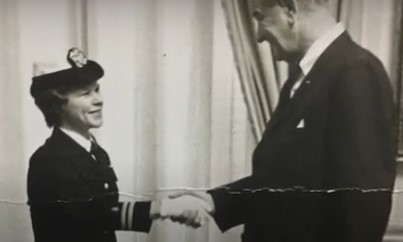
Kay retired as a Captain in the Navy Nurse Corps and still keeps in touch with the “awesome” women who served.
Watch an interview with Kay Bauuer that was part of Veteran Day news coverage from North Metro TV in Blaine, MN. Kay’s story begins at the .48-second mark in the segment.
Many forget that thousands of women also played a central role in the Vietnam War story. Tee It Up for the Troops was honored to recognize the Vietnam nurses and extends a huge thank you to all nurses and other females that served during the Vietnam War. God bless the Angels from Heaven!






